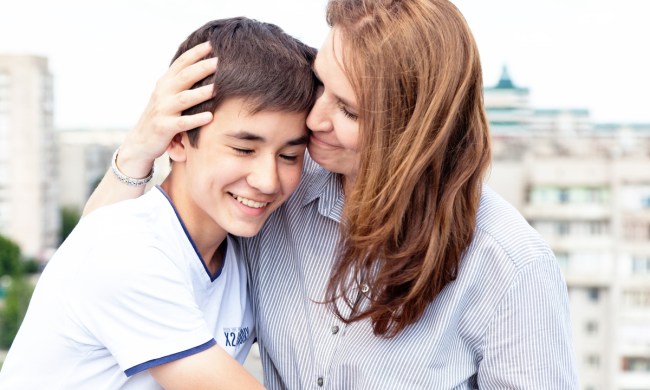If you thought the terrible twos were bad, the threenager years exhausting, and the preteen eye rolls frustrating, they’ve all got nothing on the teenage years! If you’ve got teens in your house, you’ve no doubt discovered they tend to have some annoying and borderline obnoxious habits that may drive you crazy.
The good news is you’re not alone! Parents of teens everywhere have been commiserating about their teen’s messy and annoying habits. There’s even an Instagram account called Teenager Pro Tips that gives parents a humorous look at the many things teens do that drive them crazy! Here are 10 common and annoying teen habits that will have you groaning in recognition. Did we miss any?
1. Taking all the chargers
Does your teenager just unplug your phone because they need to charge theirs? Or maybe they simply gather up all the chargers in the house because they constantly are misplacing their own. If you have teens in the house, you may want to stockpile phone chargers, and then fully label and hide your own because chargers aren’t safe around teens.
2. Dishwasher? What’s a dishwasher?
Do you have a teen who has suddenly forgotten where the dishwasher is? Do you find it odd they seem to have no problem finding the sink, or the counter, or their bedroom floor as places to put their dirty dishes? However, when it comes to the dishwasher, they have suddenly forgotten not only where it is but how to use it. For some inexplicable reason, teenagers often forget how to load and unload a dishwasher.
3. Where have all the dishes/containers/water bottles/spoons gone?
If you’ve been searching for a container to store some leftovers, maybe a missing bowl, a reusable water bottle, or all of your spoons, chances are you’ll find them in your teenager’s room. Probably under their bed, stacked on the floor, or under a pile of clothes.
4. Socks everywhere
As the mother of three teenage sons, I cannot explain why they feel the need to take their socks off the minute they walk in the door. Then they tuck them into the tightest ball of cotton I’ve ever seen and throw them in the general direction of their room (missing the room, every time). Or leave them wherever they take them off. There are always socks everywhere.
5. Use all the towels
Teens don’t like to use the same towel twice, nor do they like to hang up their towels after using them or even bring their wet towels back to the bathroom. In fact, most teens like to throw their damp towels into a nice pile on their bedroom floor, oftentimes to cover up the stack of dirty dishes that have accumulated. They will then yell at you from the bathroom to bring them a towel when they need one because there are never any clean towels for them to use.
6. Texting
Gone are the days when your teen would actually leave their room to ask you a question or even speak to you. Now, they simply text all their requests. This could be what they’d like for dinner, to ask you to buy them something, or simply to text their random thoughts. They also demand immediate responses to their texts, and if you hesitate or perhaps aren’t looking at your phone the exact minute they text you, they reply incessantly until you finally answer.
7. Bruh
Most parents remember with a bit of sadness the day they went from Mommy and Daddy to Mom and Dad. But do you remember when you went from Mom and Dad to just “Bruh?” Or maybe Bro or Dude?
8. Laundry
I don’t mind doing my kids’ laundry if they bring it to the laundry room. However, it frustrates me when I find myself washing clean clothes because instead of putting away their laundry, they throw their dirty clothes on top of the clean clothes in their laundry basket. When it comes to teens, it seems everything is “laundry,” especially when you ask them to clean their room.
9. Everything is empty
Teenagers are notorious for always eating, and with that comes a million empty boxes, drink cartons, and milk jugs that are left in the pantry, cupboards, and refrigerator. They seem incapable of actually throwing something out, opting instead to put empty — or nearly empty — containers back where they found them. If your teen wonders why there’s nothing to eat in the house, it’s probably because the people who do the grocery shopping weren’t aware that the endless boxes in the pantry are actually empty.
10. Nothing is off-limits
Whether it’s a special treat you bought yourself at the grocery store and strategically hid for when a craving strikes, that expensive shampoo you buy, or even your favorite couch blanket, teens treat everything like it’s theirs and nothing is off-limits. You either have to get better at hiding things or simply come to terms with the fact that nothing is just yours anymore.
Living with teenagers is truly amazing because there’s nothing better than watching your kids grow and become young adults, even if they can sometimes drive you crazy with these annoying habits. Can you relate?



